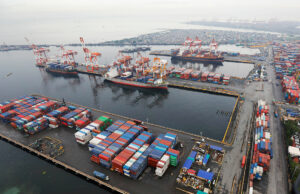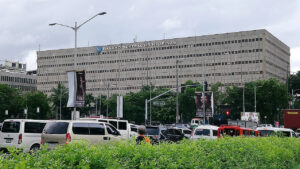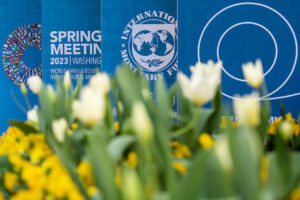ADB keeps 6% PHL growth outlook

THE Asian Development Bank (ADB) kept its 6% growth forecast for the Philippines this year, although it expects global headwinds, elevated inflation and tighter monetary policy to weigh on the outlook.
In its Asian Development Outlook (ADO) April 2023 Update, the ADB maintained its Philippine gross domestic product (GDP) growth forecast at 6%, which would make it the second fastest-growing economy in Southeast Asia. This is within the government’s 6-7% full-year target.
“The Philippines will grow at its potential this year and next year and is on track toward its goal to become an upper middle-income country,” ADB Philippines Country Director Kelly Bird said in a briefing on Tuesday.
Mr. Bird noted there is still strong growth momentum coming in from 2022, when the economy grew by 7.6%.
“It is also one of the highest growth rates in Asia-Pacific (as) domestic demand continues to remain strong,” he said.
The ADB’s growth forecast for the Philippines is second only to Vietnam (6.5%), and also above the 4.7% growth outlook for the Southeast Asia region.
For 2024, the ADB sees the country to expand by 6.2%. This is below the government’s 6.5-8% target for next year.
The ADB’s 6.2% forecast for the Philippines in 2024 is also the second-fastest among Southeast Asian economies, following Vietnam’s 6.8%. This is above the ADB’s 5% outlook for Southeast Asia next year as well.
“Growth is expected to remain strong, albeit slowed by global headwinds, high inflation, and tighter monetary policy… Household spending will be buoyed by rising employment and steady remittances from Philippine workers overseas,” the ADB said in its ADO update.
The unemployment rate improved to 4.8% in January from 6.4% a year ago. Also in January, cash remittances from overseas Filipinos rose by 3.5% to $2.76 billion in January.
“Key to sustaining a strong growth momentum is keeping public infrastructure spending at levels above 5% of GDP, as the government has planned for this year and in the medium term,” Mr. Bird said.
He said infrastructure projects will improve connectivity in the country, as well as create jobs and boost livelihoods.
RISKS TO OUTLOOKElevated inflation and a sharper-than-expected global slowdown are two downside risks to growth, Mr. Bird said.
The ADB now expects Philippine inflation to average 6.2% this year, higher than its 4.3% estimate given in December. Inflation is projected to ease to 4% in 2024.
Both inflation forecasts are above the Bangko Sentral ng Pilipinas’ (BSP) projections of 6% for 2023 and 2.9% for 2024.
“Inflation is projected to decelerate in the second half of 2023 and through 2024 as monetary tightening takes hold and global commodity prices moderate,” the ADB said.
To tame inflation, the BSP’s Monetary Board has hiked policy rates by 425 basis points (bps) since May 2022, bringing the policy rate to a near 17-year high of 6.25%.
At the sidelines of the briefing, Mr. Bird told reporters that the impact of high interest rates will be evident in 12-18 months. Since the BSP started tightening in May last year, the impact on inflation may be felt around June or July.
“So, in June or July, we might see a drop, because we’re still coming up at a low base last year. So we will probably see a sharper drop in the second half of this year towards 4%. But on average, maybe about 6% this year,” Mr. Bird said.
“Once the central bank is confident that inflation is falling back within its 2-4% target, then they may start adjusting interest rates down,” he said.
He added that the BSP may start to lower rates by early 2024.
DEVELOPING ASIAMeanwhile, developing Asia will grow faster than previously thought this year, underpinned by a stronger-than-projected rebound in China, but risks from global banking turmoil could weigh on the outlook, the ADB said on Tuesday.
Developing Asia, which groups together 46 economies in the Asia-Pacific, is forecast to grow 4.8% in 2023, the ADB said in its ADO report, more than its previous estimate of 4.6% in December, and following 4.2% growth in 2022.
Driving the region’s growth this year is China’s recovery after it ended its zero-COVID policy in December, with the world’s second-biggest economy seen expanding 5.0% this year, the ADB said, above its earlier estimate of 4.3%.
China’s reopening “is really going to create the strongest kind of support for growth in the region this year,” ADB Chief Economist Albert Park told Reuters.
And while China’s embattled property sector “remains a point of concern,” Mr. Park said the upside risks to China’s growth outlook outweigh downside risks.
“If life really returns to normal quickly and confidence comes back, growth could even be higher than 5%, which would be obviously even better for the region,” Mr. Park said.
Excluding China, the region is expected to grow 4.6% this year, slower than the previous year’s 5.4% pace.
By subregion, South Asia is expected to record the fastest expansion of 5.5% this year, buoyed by India’s projected growth of 6.4% this year, followed by Southeast Asia, which is forecast to grow 4.7% this year.
Even as growth in developing Asia gathers pace, the ADB warned challenges remain, including turbulence in the global banking sector and an escalation in the Ukraine war, which could cause a surge in commodity prices.
But for now, turmoil in the global banking sector, triggered by the collapse of two mid-sized US lenders, will not turn into “a bigger crisis of the financial system in the US,” Mr. Park said even as he urged policymakers to stay vigilant.
Working in the region’s favor is the expected easing in inflation, which would reduce the need for frequent and sizeable interest rate hikes that could dampen consumption.
From 4.4% in 2022, inflation is forecast to decelerate to 4.2% this year and 3.3% next year, the ADB said, but it warned that core inflation remained high in some economies and required close monitoring. — Keisha B. Ta-asan and Reuters




